King of the off-road: 40 years of the Mercedes G-Wagen
The Atari computer, the first Walkman music player and the iconic, slab-sided Mercedes G-Class. These three unlikely bedfellows share one thing in common – each represented the pinnacle of technology in 1979. But, 40 years later, only one has stood the test of time.
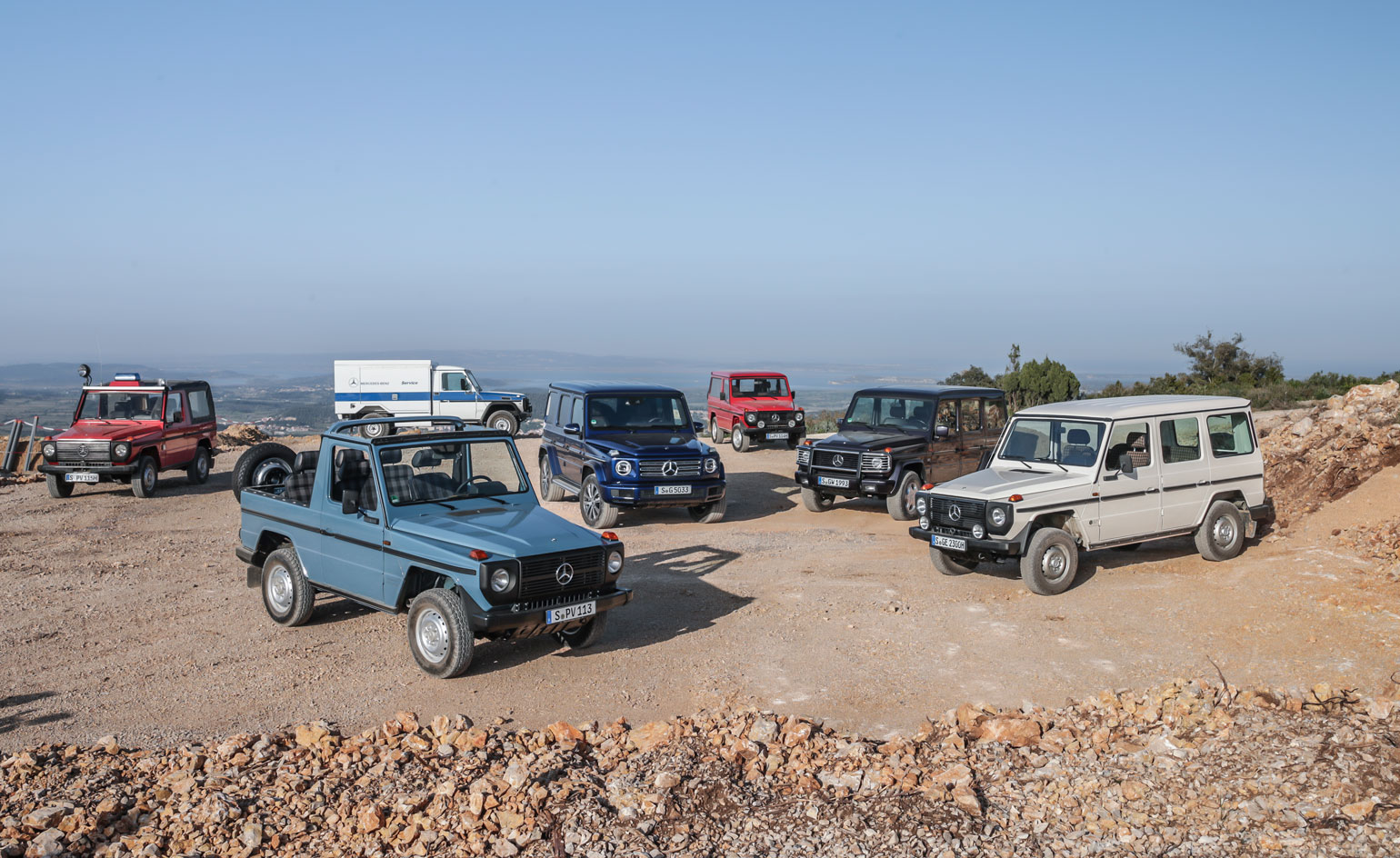
Over four decades, Mercedes’ G-Class – or G-Wagen as its more affectionately known – has built up quite a CV. The once utilitarian, ‘go-anywhere’ off-roader has circumnavigated the planet, won the gruelling Paris-Dakar Rally at the hands of Jackie Ickx and carried the Vatican City’s Holy father.
‘Whether it’s covered in mud or freshly painted, the G-Class is always a statement,' says Dr. Gunnar Güthenke, Head of the Mercedes G-Class programme at the newly minted G-Class Experience Centre in the grounds of the G’s production facility in Graz, Austria.
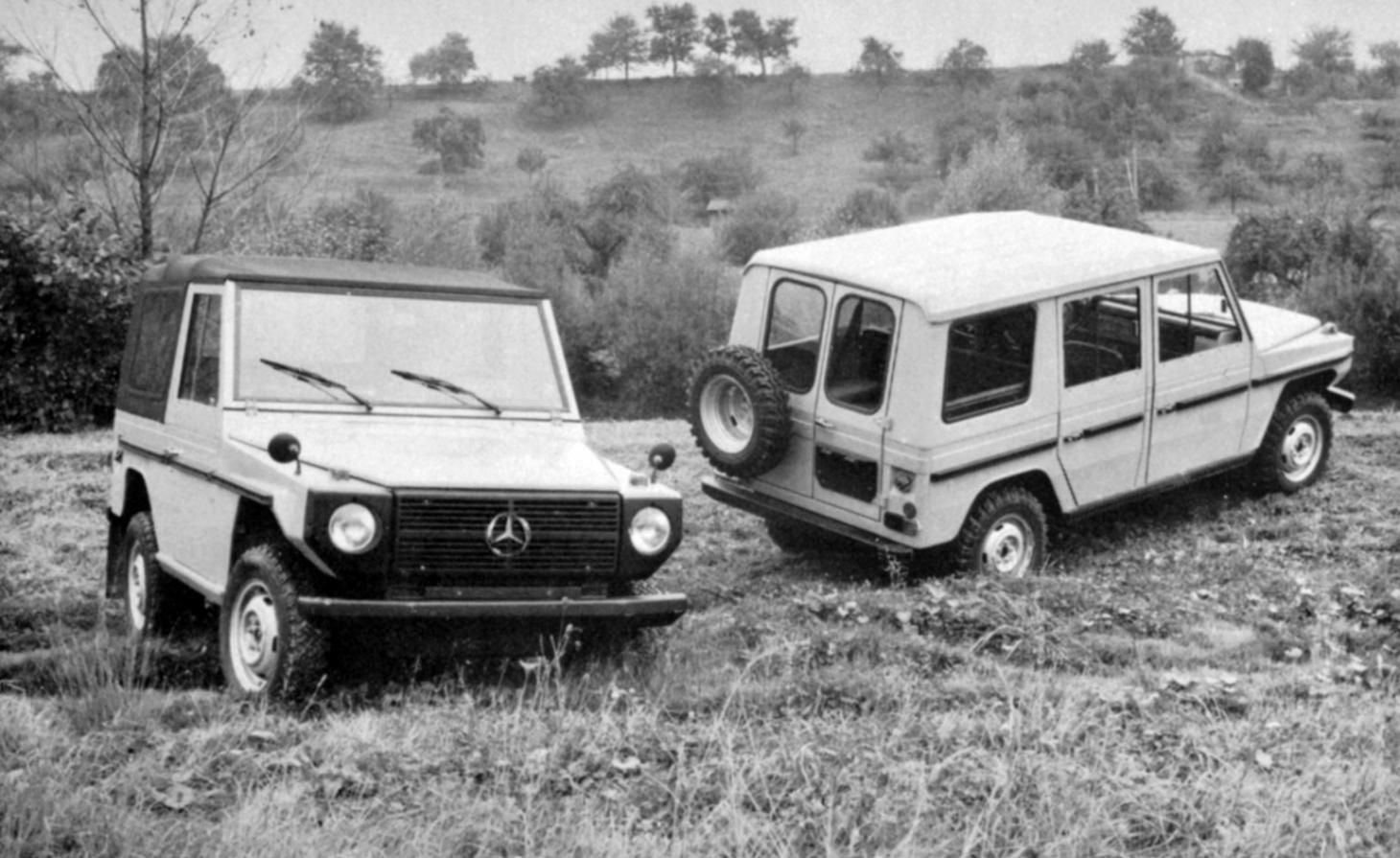
Mercedes-Benz off-road vehicle as an open vehicle with short wheelbase (2,400 millimetres) and a station wagon with long wheelbase (2,850 millimetres).
The story of one of the world’s best-loved off-roaders starts in the South of France in 1979 – the moment the G was first revealed to the media. On first impressions, the press was captivated by its old-school ladder-type frame, its chiselled jawline and the sparse but practical interior. With the option of four different engines, two wheelbase lengths and five body styles to choose from, the G-Wagon had something for every occasion. From fire truck to city runabout and everything in between, the ‘G’ was Stuttgart’s answer to the inimitable and much-admired Land Rover. Just a year after its launch, Pope John Paul II’s visit to Germany prompted the factory in Graz to produce a personal, glass-domed G-Wagen, one of the best-known ‘Popemobiles’. Marketing genius or a benevolent gift? Either way, the G-Wagen gained worldwide fame in an instant.
While most car makers refresh their product offering within the space of five years, Mercedes thought differently. After a decade of continuous, unchanged production, Merc ushered in a new era in 1989, morphing the G-Wagen into a more comfortable and refined off-roader. Despite its virtually unchanged exterior, the new G was more reflective of the affluent, town and country buyers it had come to attract. What started life as a boxy, utilitarian workhorse was fast becoming a cult classic.
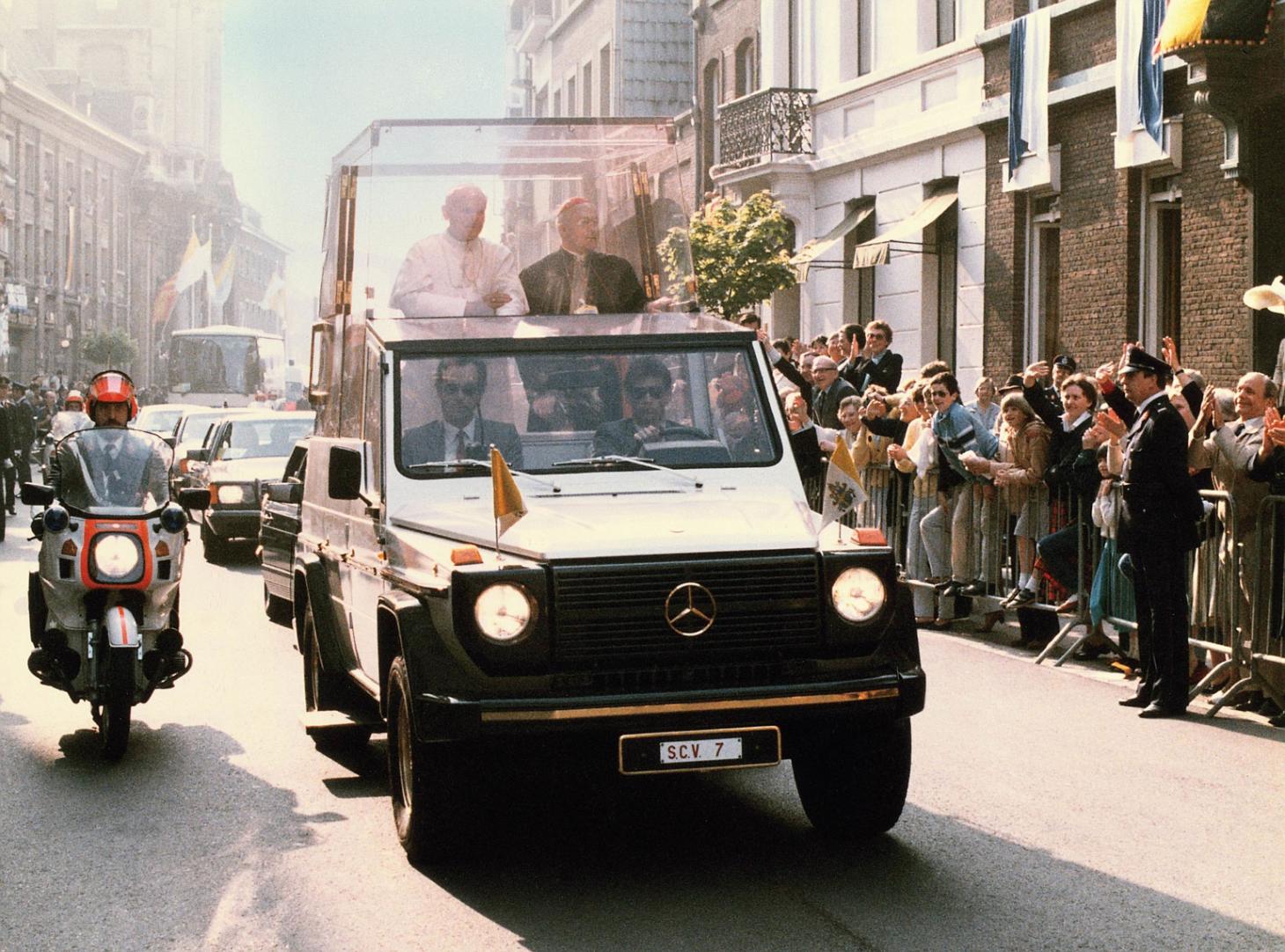
Pope John Paul II out and about in his Mercedes-Benz 230 G Popemobile, with registration number SCV 7.
With the G still charming its way into the hearts of everyone from city slickers to civil servants, the Stuttgart-based carmaker was working on something very different. In the town of Affalterbach, just a few miles north-west of Mercedes’ headquarters stood Aufrecht, Melcher and Großaspach – otherwise known as AMG. Initially developed as a stand-alone Mercedes tuning company, the outfit’s operations quickly became intertwined with the German auto giant, forming the basis of an allegiance that would go on to create some of the finest performance cars of the century. Of all Mercedes’ models, the G would be the least likely candidate for performance treatment but, in 1999, both AMG and Merc pulled the covers off the 349bhp, 5.5-litre naturally aspirated V8 powered G 55 AMG. A new niche of ballistic, performance off-roaders had been born.
After blending two oddly complementary strands of German engineering, the floodgates were open. Out poured imitators and challengers as Porsche, Land Rover and BMW brought to market Frankenstein creations that combined off-road ability with supercar performance. Mercedes and AMG had – perhaps unwittingly – started the automotive equivalent of an all-road arms race. To cut through the noise, Merc would need to think far beyond the slab-sided box it had first dreamt up in the late 1970s.
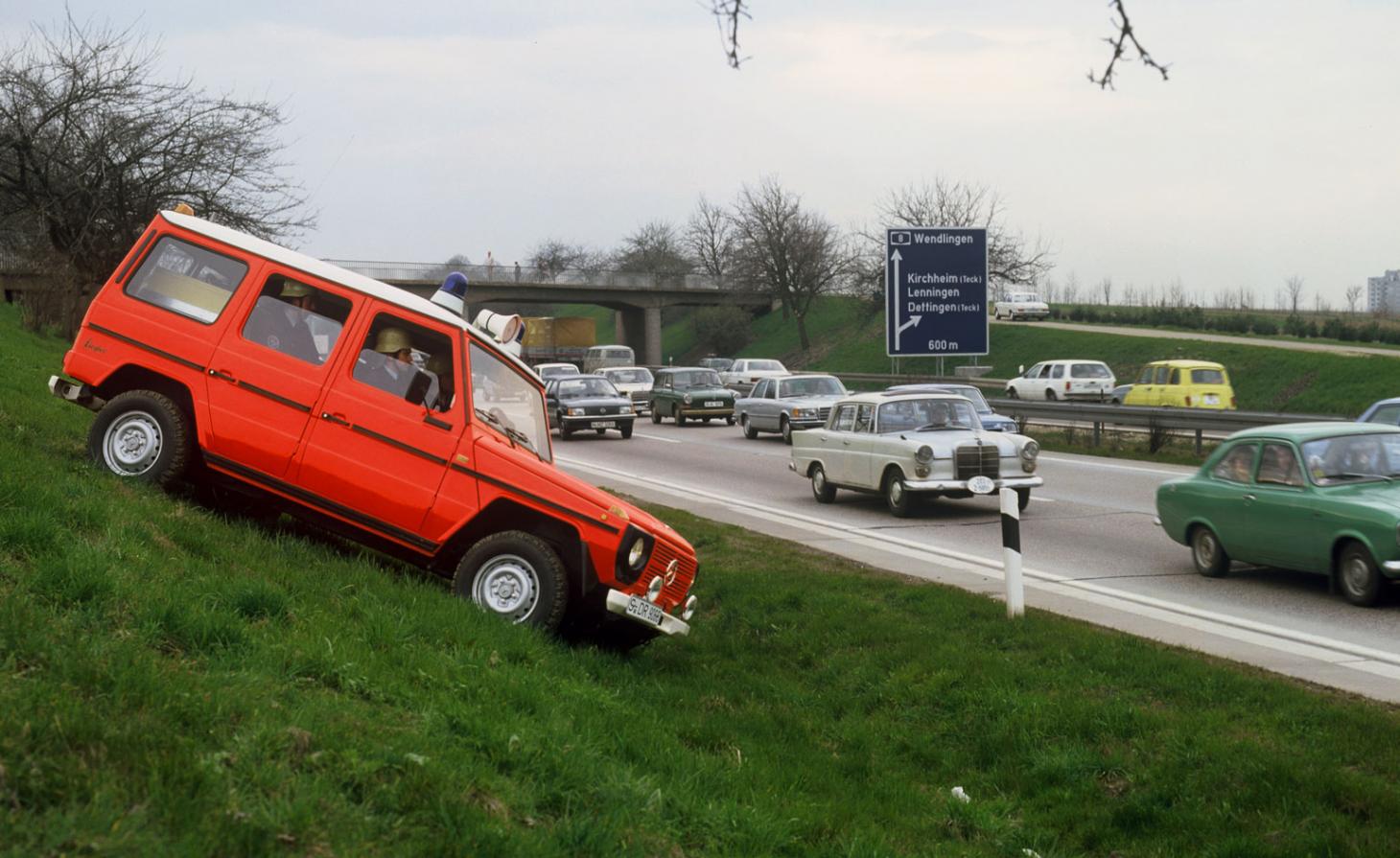
Mercedes-Benz ‘G’ model from model series 460, Station Wagon with long wheelbase employed as a fire-fighting vehicle.
Throughout the 2000s, the marque continued to push the boundaries of what was mechanically possible. 2002 saw the G-Wagen up the ante with the addition of a monstrous 6.3-litre V12 with close to 500bhp. Ten years later, the engineering experts at AMG squeezed an extra 183bhp out of the engine before launching the monstrous, six-wheel-drive G 63 AMG 6x6 in 2013. Despite its brutal appearance and all-conquering ability, there was more to come.
2017 brought about the previous generation G-Wagen’s swansong – the open-top Mercedes-Maybach G 650 Landaulet. Limited to 99 vehicles, the G 650 was the road-going equivalent of a superyacht, complete with drop-top canvas roof, limousine levels of luxury and nautical proportions. With a V12 bi-turbo engine from AMG, a length of 5.3meters and a height of 2.2meters, the G 650 is beyond comparison – a rare glimpse of true automotive silliness from the Stuttgart powerhouse.

Mercedes-Maybach G 650 Landaulet from model series 463, a limited edition of 99 vehicles. Photography from 2017.
Now, in 2019, the G-Wagen enters its 40th year in production. Since the first models rolled off the very same production line in Graz, each bears the ‘Schöckle-proved’ hallmark, nestled in the doorframe – a nod to the infamous, 1445-meter mountain in Graz, where every new development made on the G undergoes more than 2,000km of testing.
For four decades, the G has been turning heads, churning through mud and even frequenting battlefields the world over. Despite that, it’s believed around 80 per cent of them are still roaming the streets to this day. While its eccentric iterations are novel distractions, at its core is a design that’s barely changed in just short of half a century. A design classic formed in response to function but developed by demand and desire. Like it or loathe it, if the past four decades are anything to go by, the Mercedes G-class is here to stay.
INFORMATION
Wallpaper* Newsletter
Receive our daily digest of inspiration, escapism and design stories from around the world direct to your inbox.
Mercedes G-Class, from £94,580. mercedes-benz.co.uk
-
 Japan in Milan! See the highlights of Japanese design at Milan Design Week 2025
Japan in Milan! See the highlights of Japanese design at Milan Design Week 2025At Milan Design Week 2025 Japanese craftsmanship was a front runner with an array of projects in the spotlight. Here are some of our highlights
By Danielle Demetriou
-
 Tour the best contemporary tea houses around the world
Tour the best contemporary tea houses around the worldCelebrate the world’s most unique tea houses, from Melbourne to Stockholm, with a new book by Wallpaper’s Léa Teuscher
By Léa Teuscher
-
 ‘Humour is foundational’: artist Ella Kruglyanskaya on painting as a ‘highly questionable’ pursuit
‘Humour is foundational’: artist Ella Kruglyanskaya on painting as a ‘highly questionable’ pursuitElla Kruglyanskaya’s exhibition, ‘Shadows’ at Thomas Dane Gallery, is the first in a series of three this year, with openings in Basel and New York to follow
By Hannah Silver
-
 The new Smart #5 takes the brand's essential character upmarket and offroad
The new Smart #5 takes the brand's essential character upmarket and offroadKai Sieber, head of design Smart at Mercedes-Benz Design, discusses the evolution and style of the new Smart #5
By Jonathan Bell
-
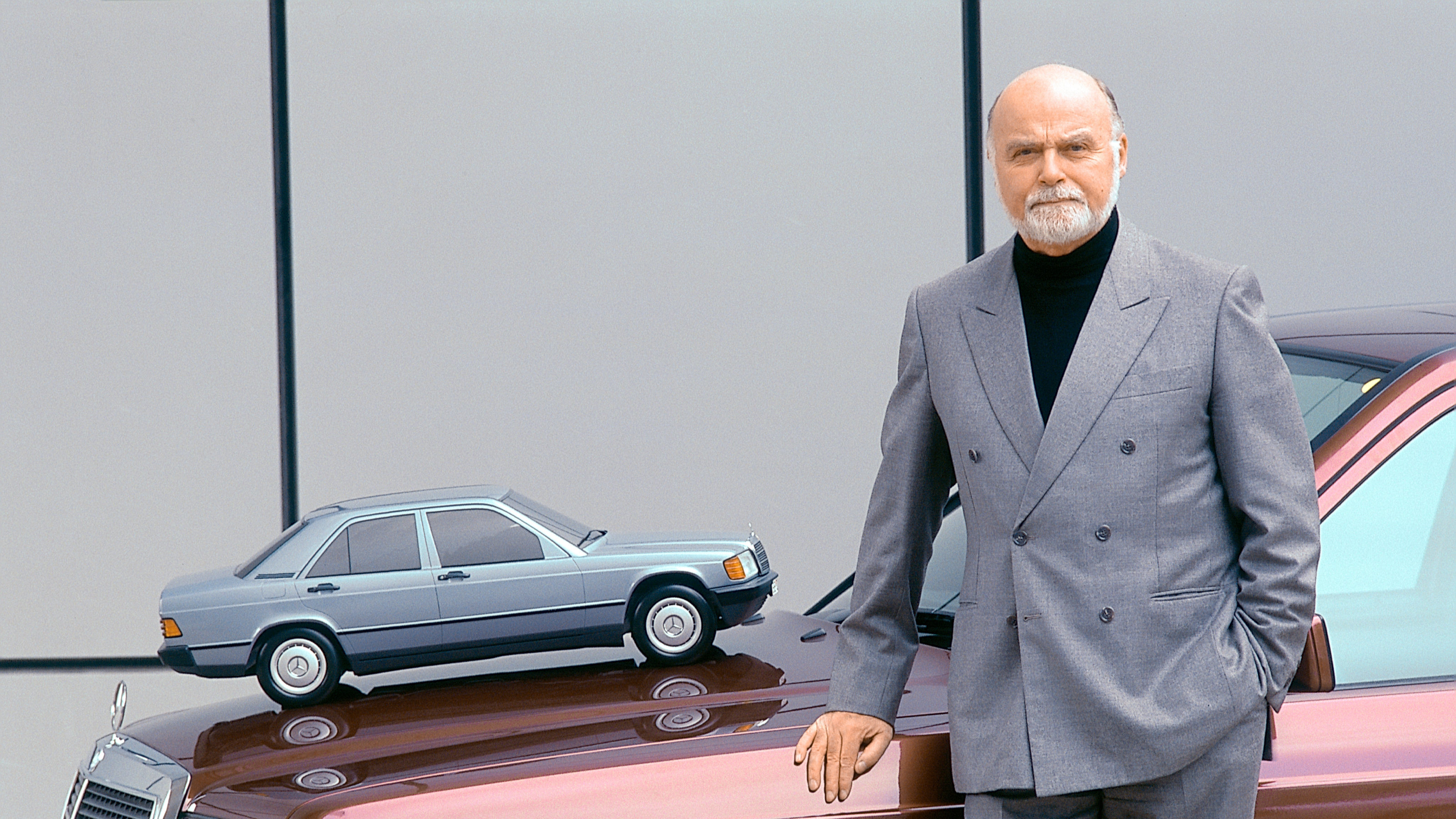 In celebration of Bruno Sacco, the man who brought order and elegance to Mercedes design
In celebration of Bruno Sacco, the man who brought order and elegance to Mercedes designThe car designer Bruno Sacco has died. Sacco shaped Mercedes-Benz design for nearly a quarter of a century. We look back on his impressive legacy
By Jonathan Bell
-
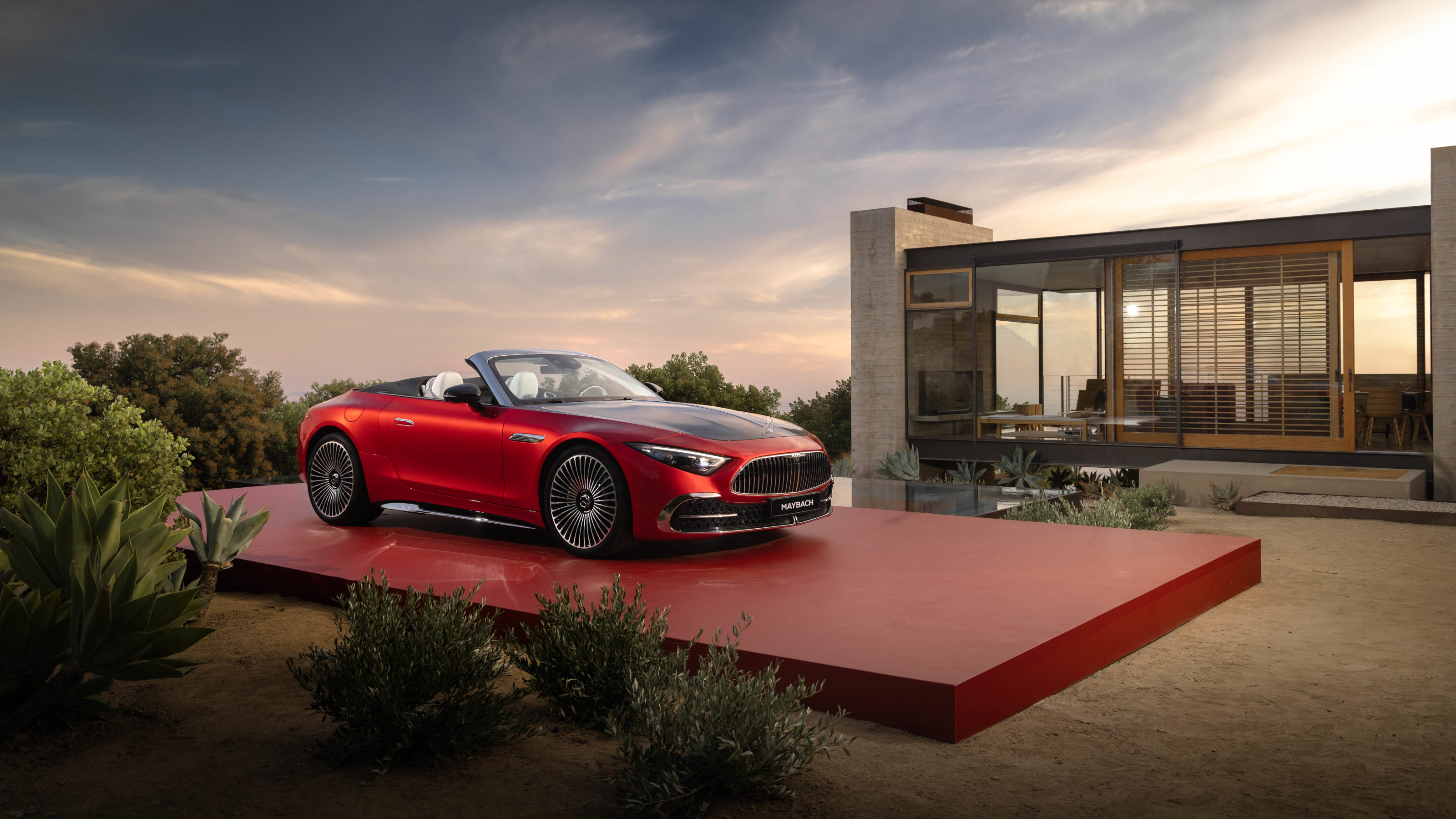 Does the Mercedes-Maybach SL 680 Monogram Series epitomise Pebble Beach culture?
Does the Mercedes-Maybach SL 680 Monogram Series epitomise Pebble Beach culture?Mercedes-Maybach launched its new SL 680 Monogram Series at Monterey Car Week 2024. How does Maybach's 21st-century take on upper-class motoring square with America's most upscale auto show?
By Jonathan Bell
-
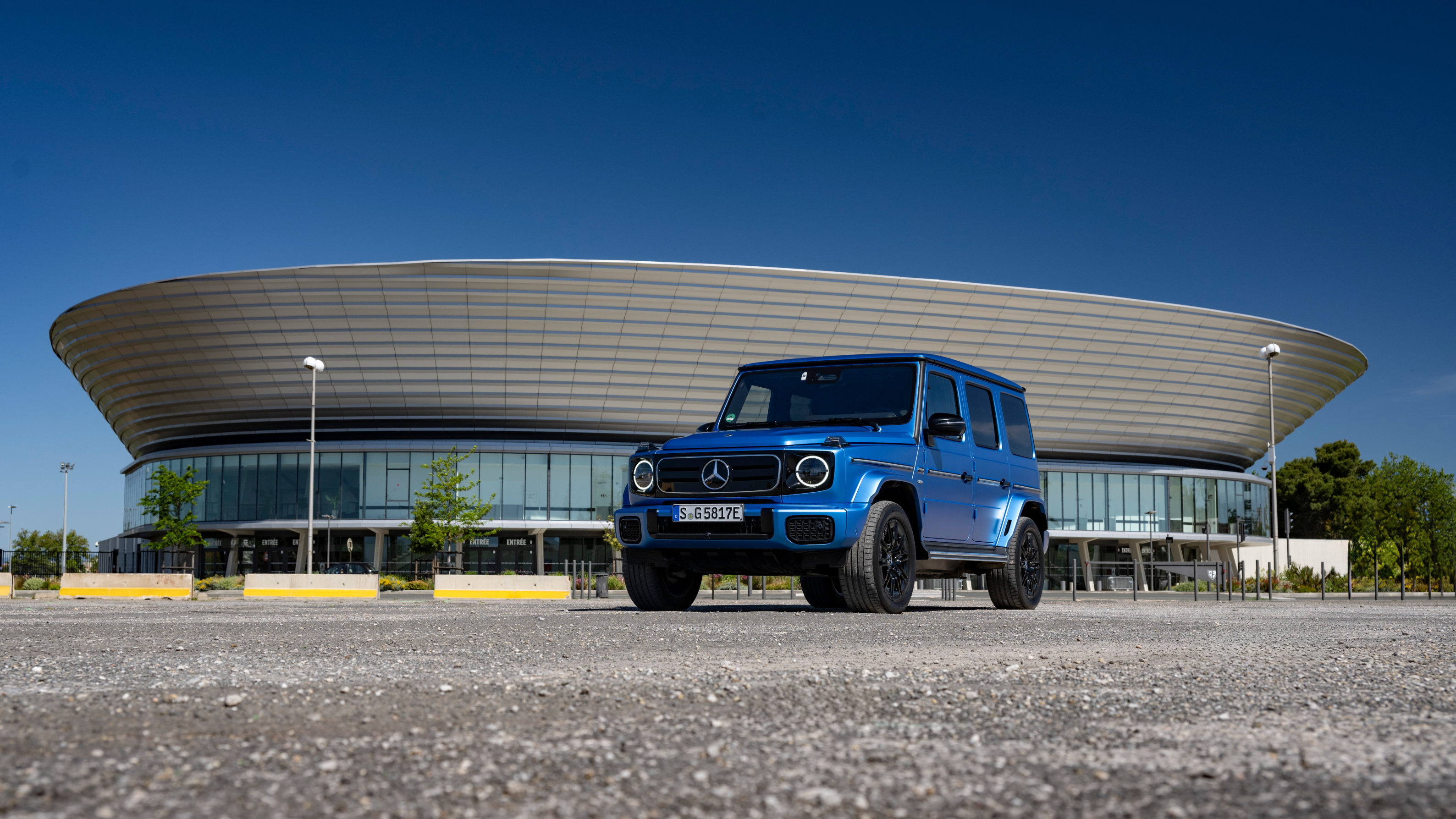 Mercedes electrifies the G-Wagen, transforming its brutish off-roading icon
Mercedes electrifies the G-Wagen, transforming its brutish off-roading iconThe Mercedes G-Class began life as a utility vehicle, before evolving into a dubious urban status symbol that could win approval from LA to London. How does the first all-electric version fare?
By Guy Bird
-
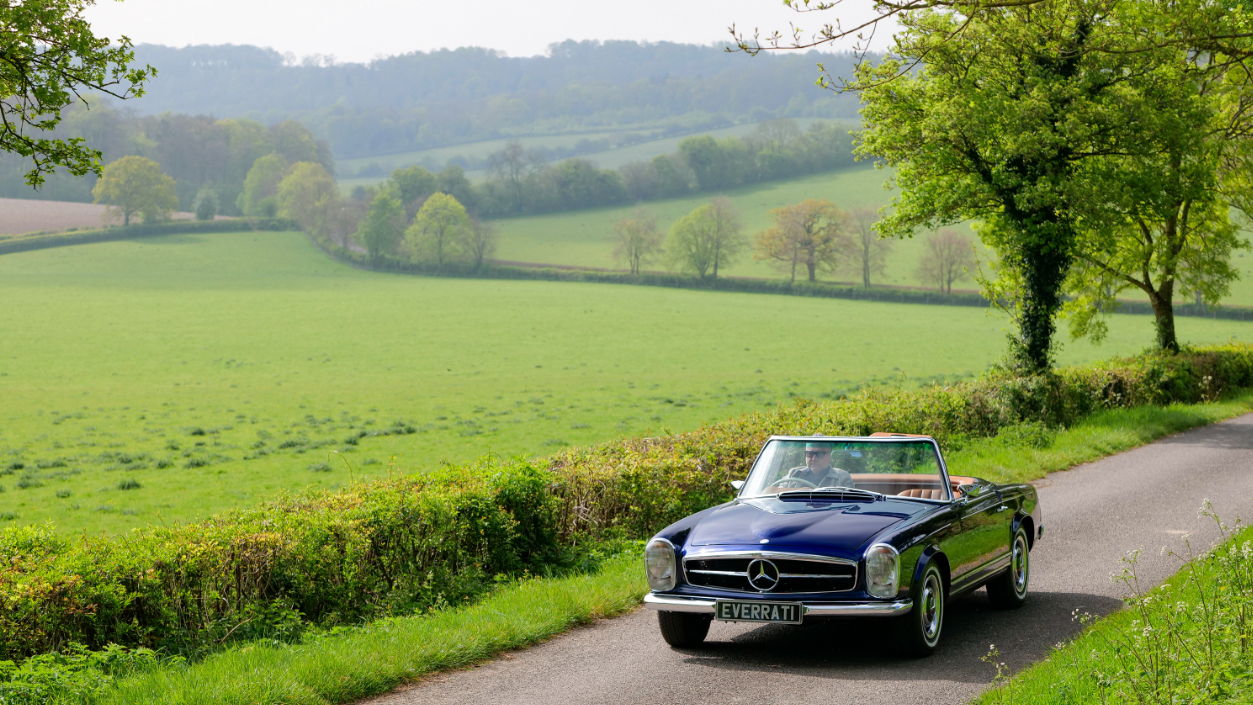 An all-electric 1960s Mercedes-Benz SL, perfect for swift, silent classic cruising
An all-electric 1960s Mercedes-Benz SL, perfect for swift, silent classic cruisingElectrification specialist Everatti unveils its sympathetic upgrade to a 1960s icon, the elegant Mercedes-Benz SL W113
By Jonathan Bell
-
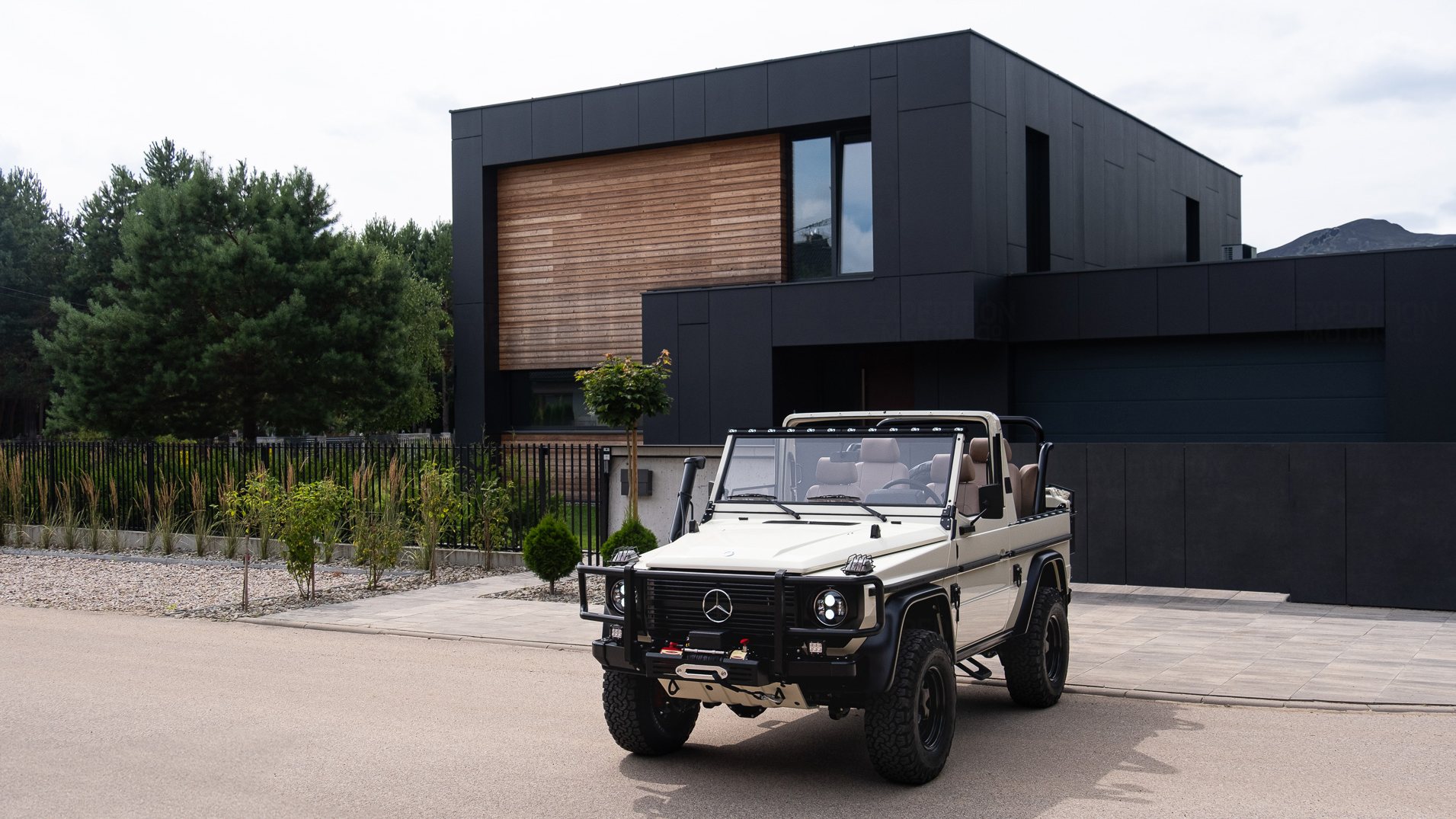 EMC White Wolf is a military Mercedes turned modern-day cruiser
EMC White Wolf is a military Mercedes turned modern-day cruiserThe Expedition Motor Company (EMC) takes surplus Mercedes G-Wagens and uprates them for contemporary collectors, creating a classic car that goes anywhere
By Jonathan Bell
-
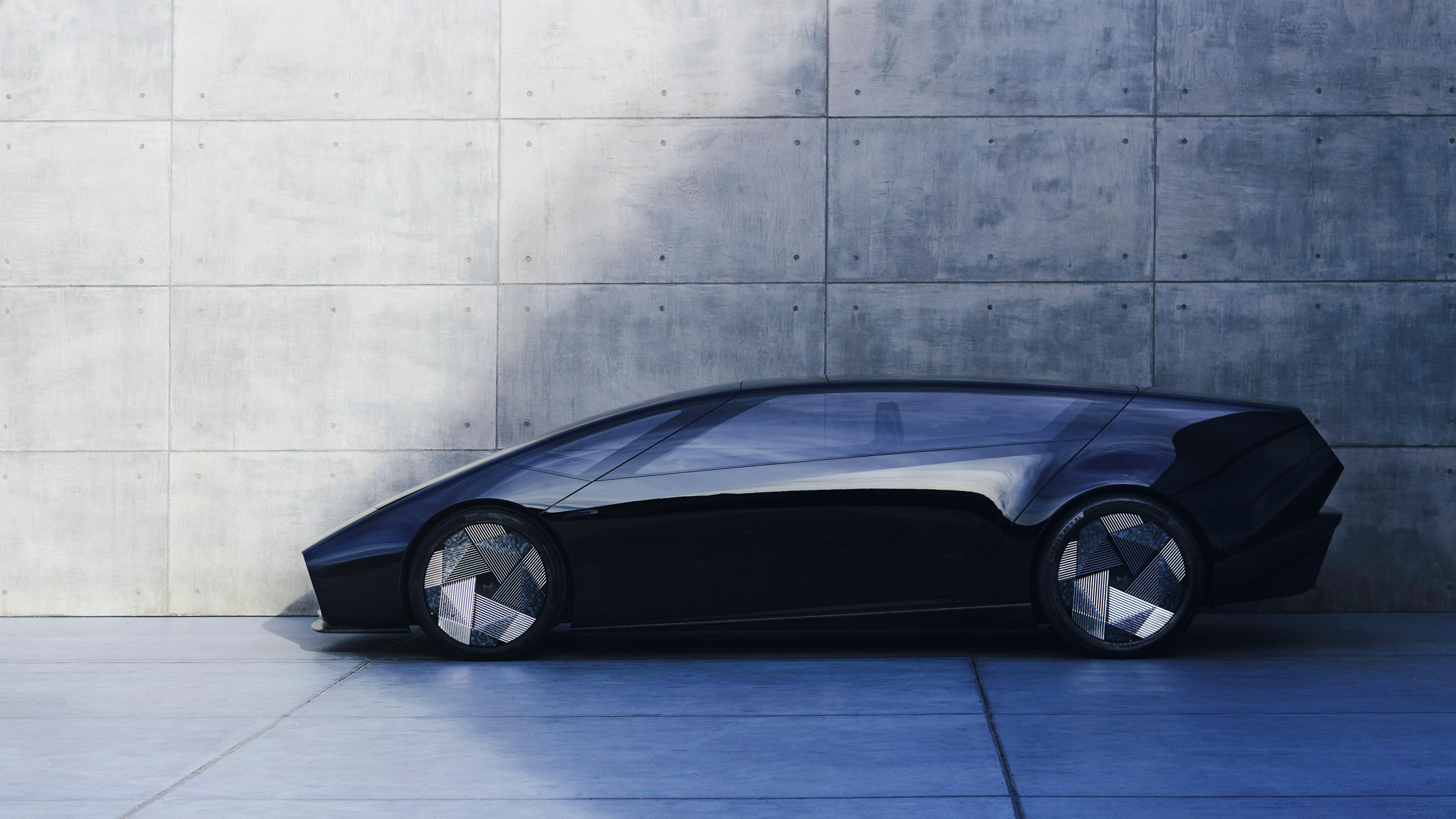 CES 2024 was a showcase for how to shoehorn AI into next-generation cars
CES 2024 was a showcase for how to shoehorn AI into next-generation carsCES 2024 in Las Vegas underlined that future mobility will be shaped by AI, like it or not, as intelligent assistants emerge to guide, plan and converse with their human cargo
By Jonathan Bell
-
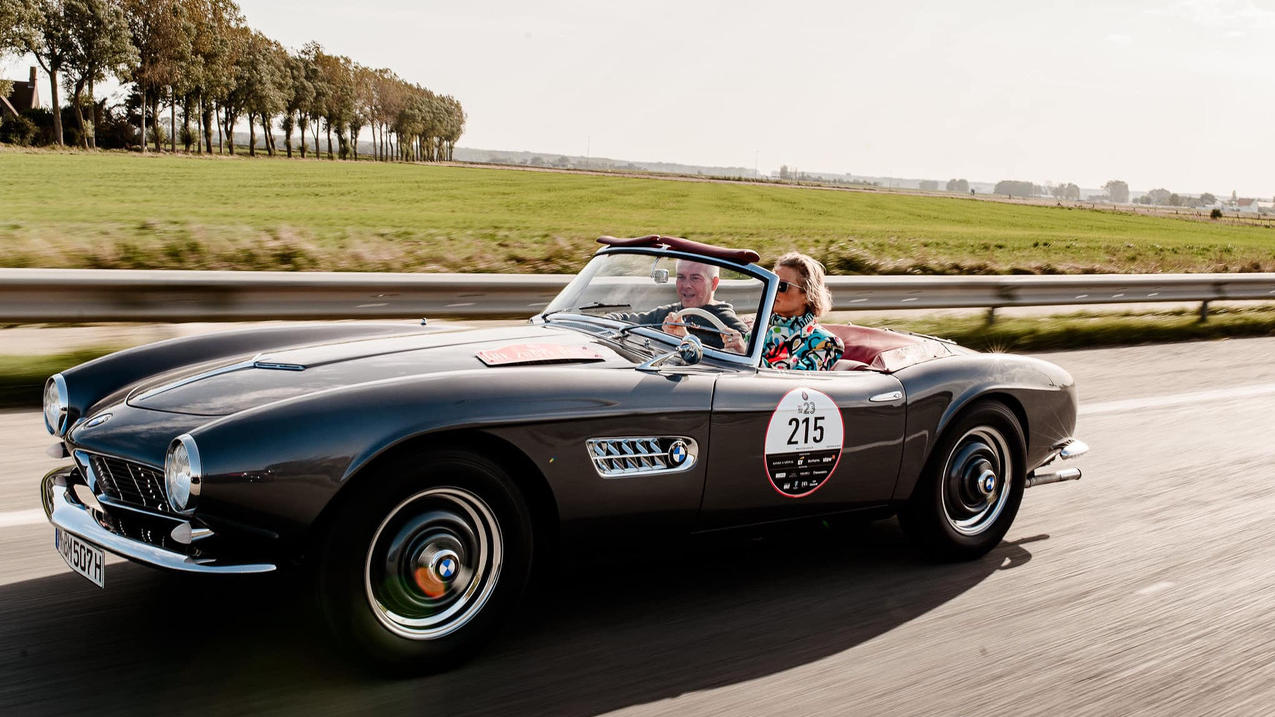 Zoute Grand Prix is a car fest like no other at a pristine Belgian beachside town
Zoute Grand Prix is a car fest like no other at a pristine Belgian beachside townAmy Serafin takes to the well-heeled streets of Knokke-Heist to experience the Zoute Grand Prix, its annual cavalcade of classic car-related events, from a rally to an auction
By Amy Serafin